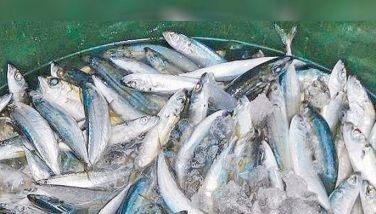YEARENDER: 2013 a year of major natural disasters
MANILA, Philippines - The year 2013 has been marked by major natural disasters for the Philippines as the country bore the brunt of a monster typhoon and a deadly earthquake that killed thousands and left billions of pesos in damage to infrastructure and properties.
A total of 25 tropical cyclones have entered the country this year, surpassing the average of 19 to 20 cyclones annually, the Philippine Atmospheric, Geophysical and Astronomical Services Administration (PAGASA) said.
On Nov. 8, Super Typhoon Yolanda (international name Haiyan) slammed Tacloban City, Leyte, Samar and other provinces in Eastern Visayas with strong winds and storm surges as high as seven meters, killing more than 6,000 people.
As of Dec. 23, over 1,700 remained missing, including PAGASA weather observer Salvacion Avestruz. PAGASA Tacloban station chief Mario Pearanda said Avestruz, 42, tried to save the bureau’s microbarograph even though a huge wave was about to swallow the station.
PAGASA has incurred P74.24 million in damage to weather stations and equipment, including a P30-million meteorological buoy installed in Bantayan Island, Cebu.
Yolanda also destroyed the agency’s Doppler radar in Guiuan, Eastern Samar, which serves as the country’s first line of defense against typhoons.
PAGASA Visayas director Oscar Tabada said the destruction of the P450-million Doppler radar in Guiuan has made the country’s eastern section blind to incoming typhoons.
Yolanda packed winds of 235 kilometers per hour near the center and gusts of up to 275 kph when it made landfall over Guiuan at 4:40 a.m. on Nov. 8.
It made a second landfall over Tolosa, Leyte at 7 a.m. on the same day.
In all, Yolanda made landfall six times before exiting the Philippine area of responsibility on Nov. 9. The damage to infrastructure and agriculture rose to P36.691 billion as of Dec. 23, according to the National Disaster Risk Reduction and Management Council.
The typhoon affected more than 16 million people in the Visayas and some parts of Southern Luzon.
Yolanda is now considered one of the four most powerful typhoons ever recorded in the world and the most intense to have made landfall. It is also the strongest and most destructive cyclone to hit the Philippines in more than four decades, according to PAGASA.
Other destructive cyclones that hit the country this year were Labuyo, Odette, Santi and Vinta.
Typhoon Labuyo (Utor) battered Northern Luzon last August, leaving at least 11 people dead and damage to property worth P1 billion.
Odette (Usagi), the first super typhoon to hit the country this year, battered Northern and Central Luzon, Bicol, Mimaropa and the Visayas in September, leaving damage to property worth P59 million. A total of 6,728 families were affected by the heavy rains.
Typhoon Santi (Nari) slammed Northern and Central Luzon in October, killing at least 15 people.
Disaster officials said Santi left damage to infrastructure and agriculture amounting to P3 billion.
Tropical storm Vinta (Krosa) also entered the country in October, killing at least four people and leaving P276.6 million worth of damage to property.
In August, torrential rains spawned by Tropical Storm Maring (Trami) flooded most parts of Metro Manila and nearby provinces. The storm left at least eight people dead.
PAGASA climatologists said seven out of the 11 cyclones that visited the country from the second half of September to mid-December reached typhoon category.
Experts also observed slightly warmer sea surface temperatures in the Western Pacific and Indian oceans during the period, which could have triggered the intensification of the weather disturbances.
PAGASA said warm sea temperature is favorable for tropical cyclone formation.
“The (Pacific) Ocean was so warm during Yolanda’s development,†PAGASA climatologist Ana Liza Solis said.
Killer quake
On Oct. 15, a magnitude 7.2 earthquake struck the provinces of Bohol and Cebu, killing more than 200 people and displacing tens of thousands of residents.
At least 797 were reported injured, 692 of them from Bohol.
Philippine Institute of Volcanology and Seismology (Phivolcs) director Renato Solidum said the quake was generated by a blind fault, now called the North Bohol Fault.
The powerful earthquake moved part of Bohol closer to Cebu by 55 centimeters but the phenomenon does not pose any threat to Cebu or Bohol, Solidum said.
The tremor has generated more than 4,000 aftershocks. Solidum had warned aftershocks are likely to continue for months or years but these are expected to be weaker than the main shock. The Phivolcs chief also said the North Bohol Fault might not move in several hundreds of years. But there are other faults and volcanoes in other parts of the country that will generate earthquakes. The Philippines is no stranger to catastrophic natural disasters. It was ranked as the third most disaster-prone country in the world because of its high exposure to natural calamities based on the World Disaster Report 2012 released in Brussels, Belgium.
A recent National Geographic article cited five reasons why the Philippines is prone to natural disasters, including warm ocean waters and low-lying coasts.
- Latest
- Trending




























